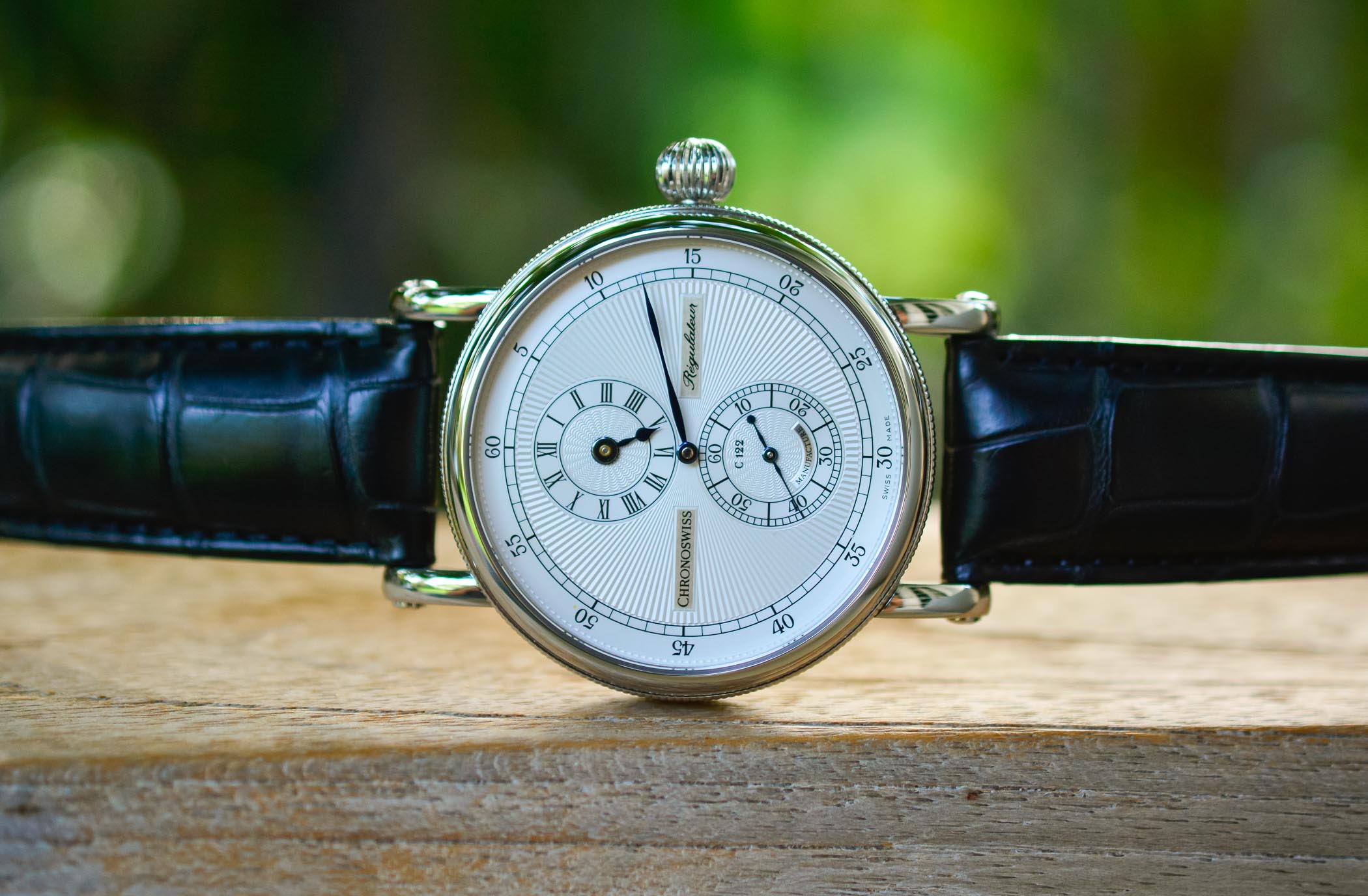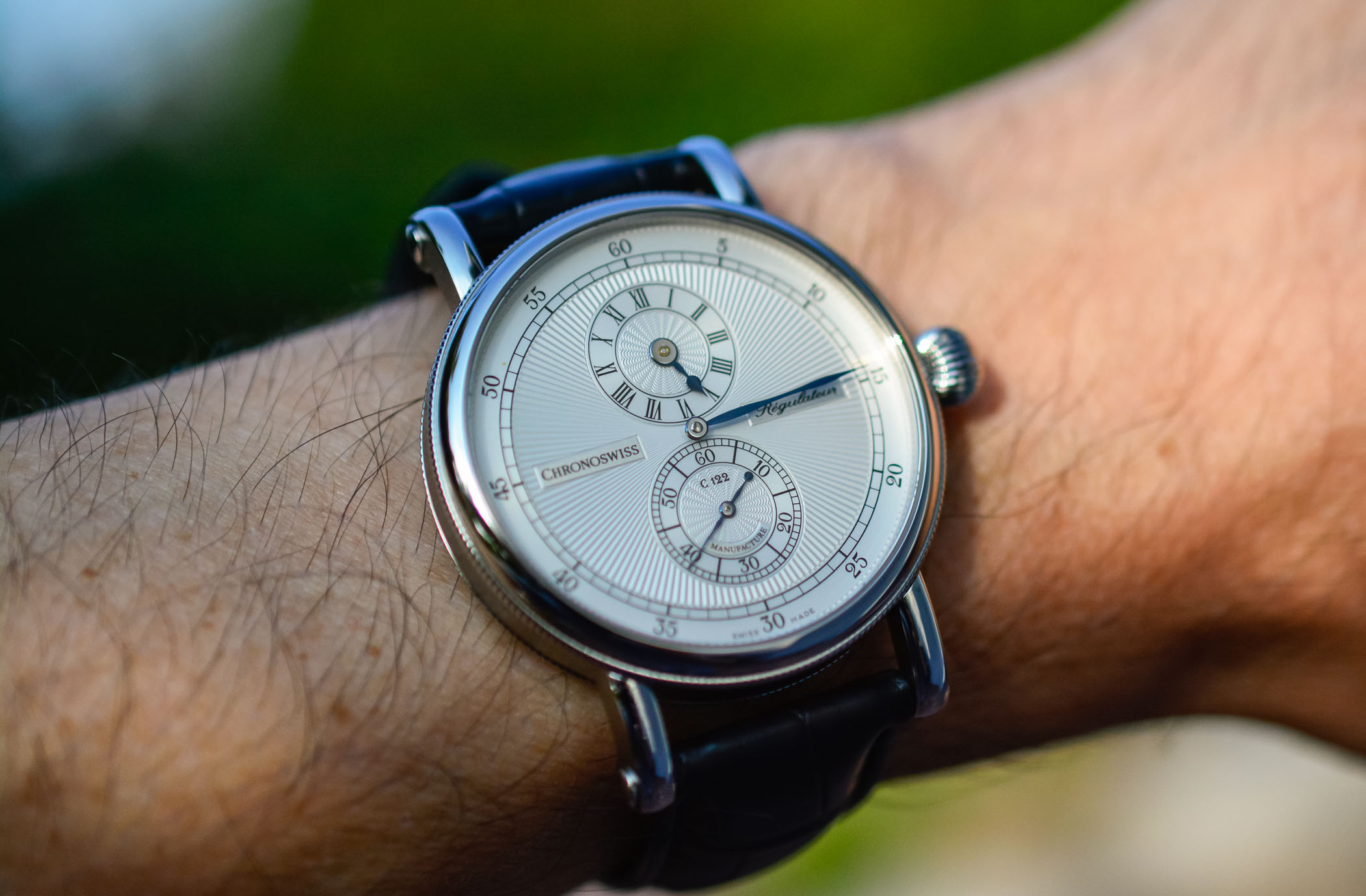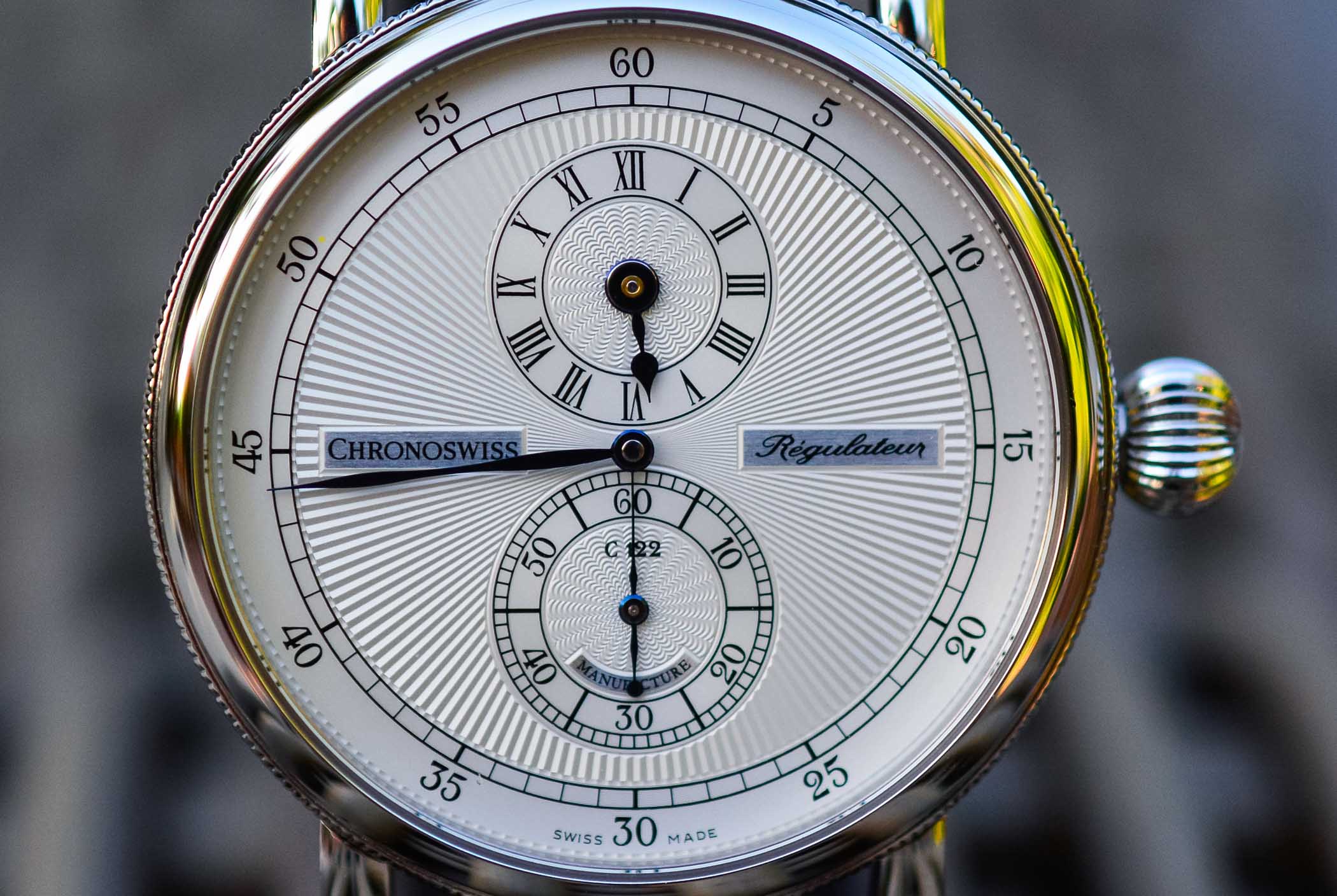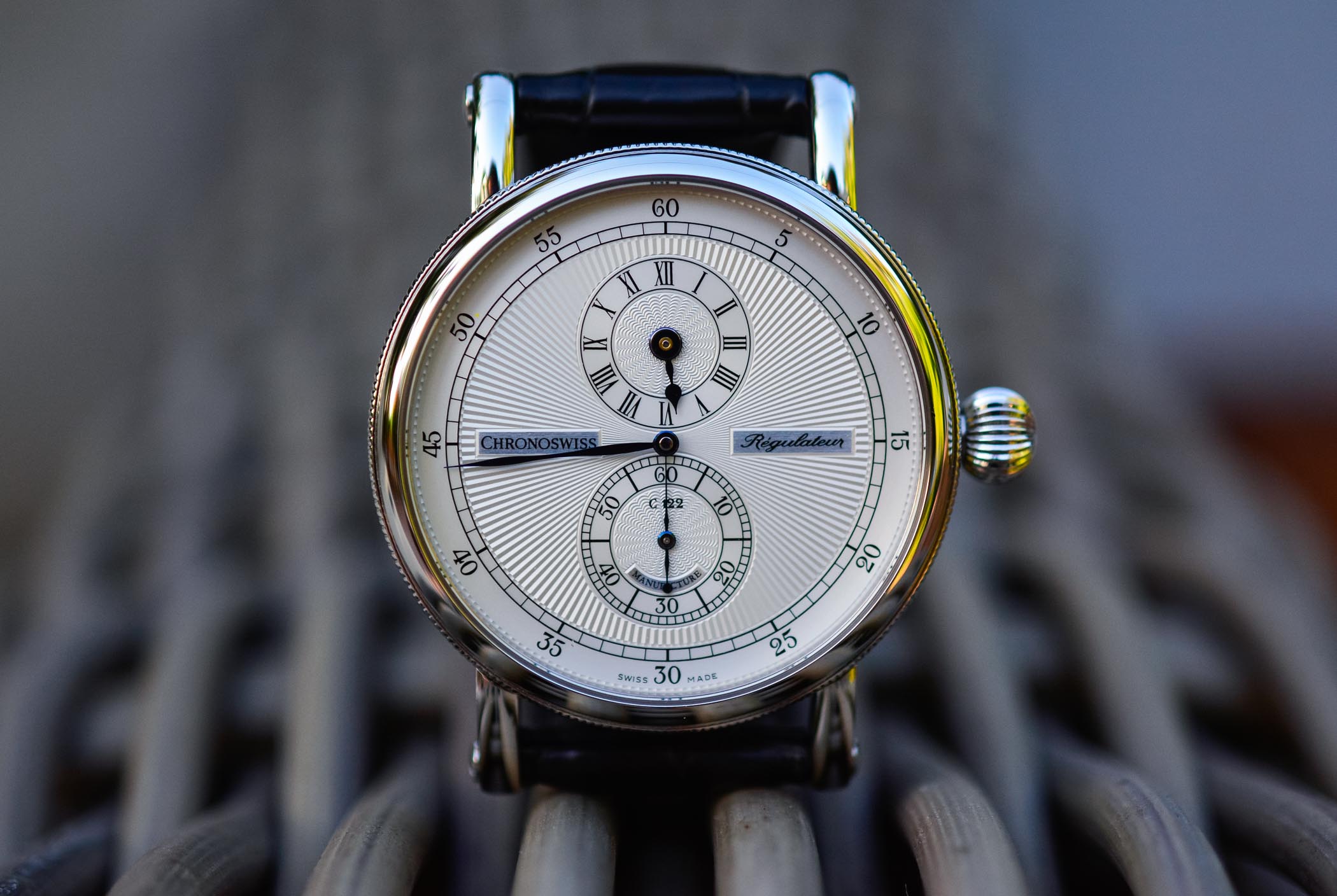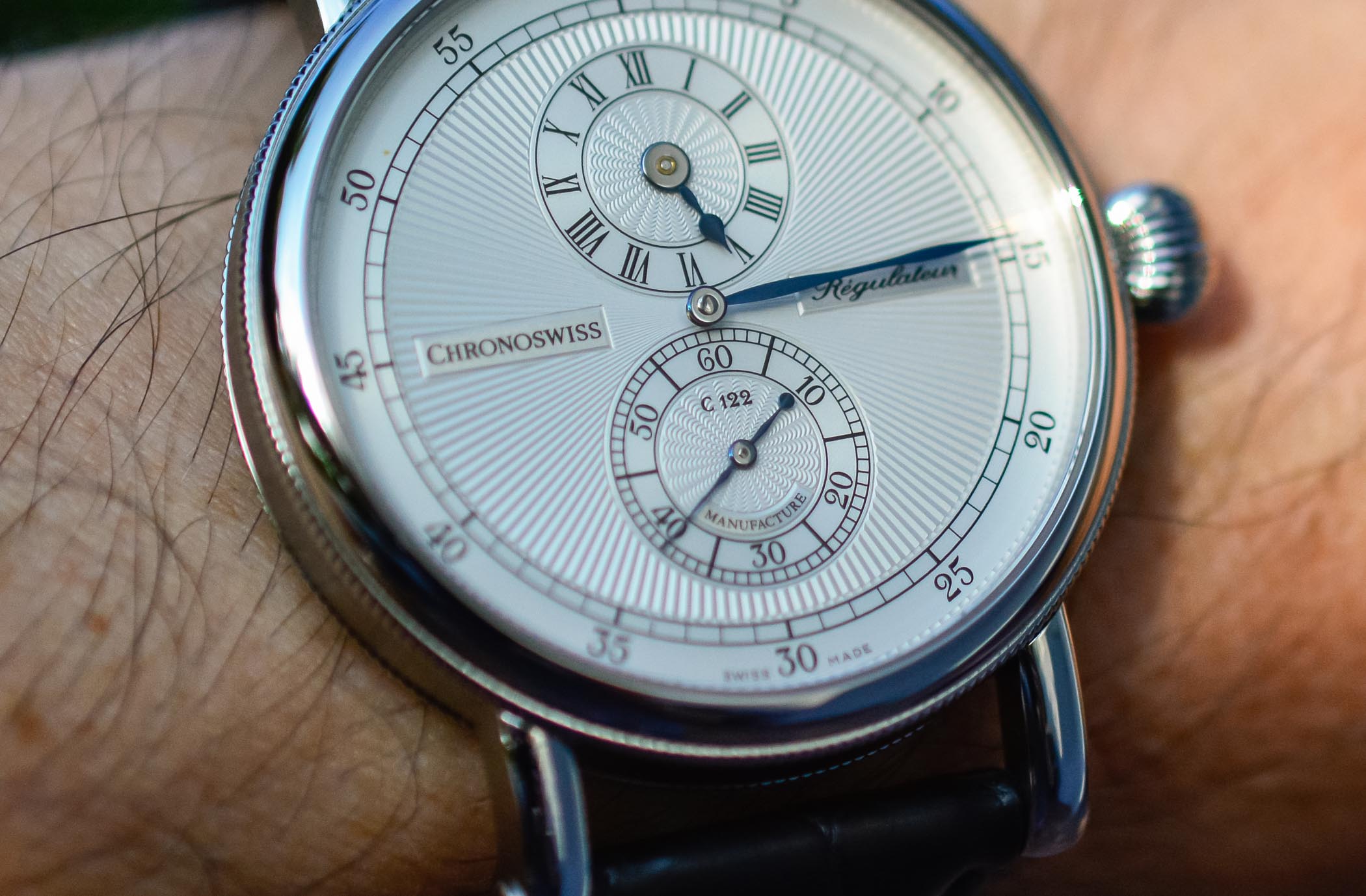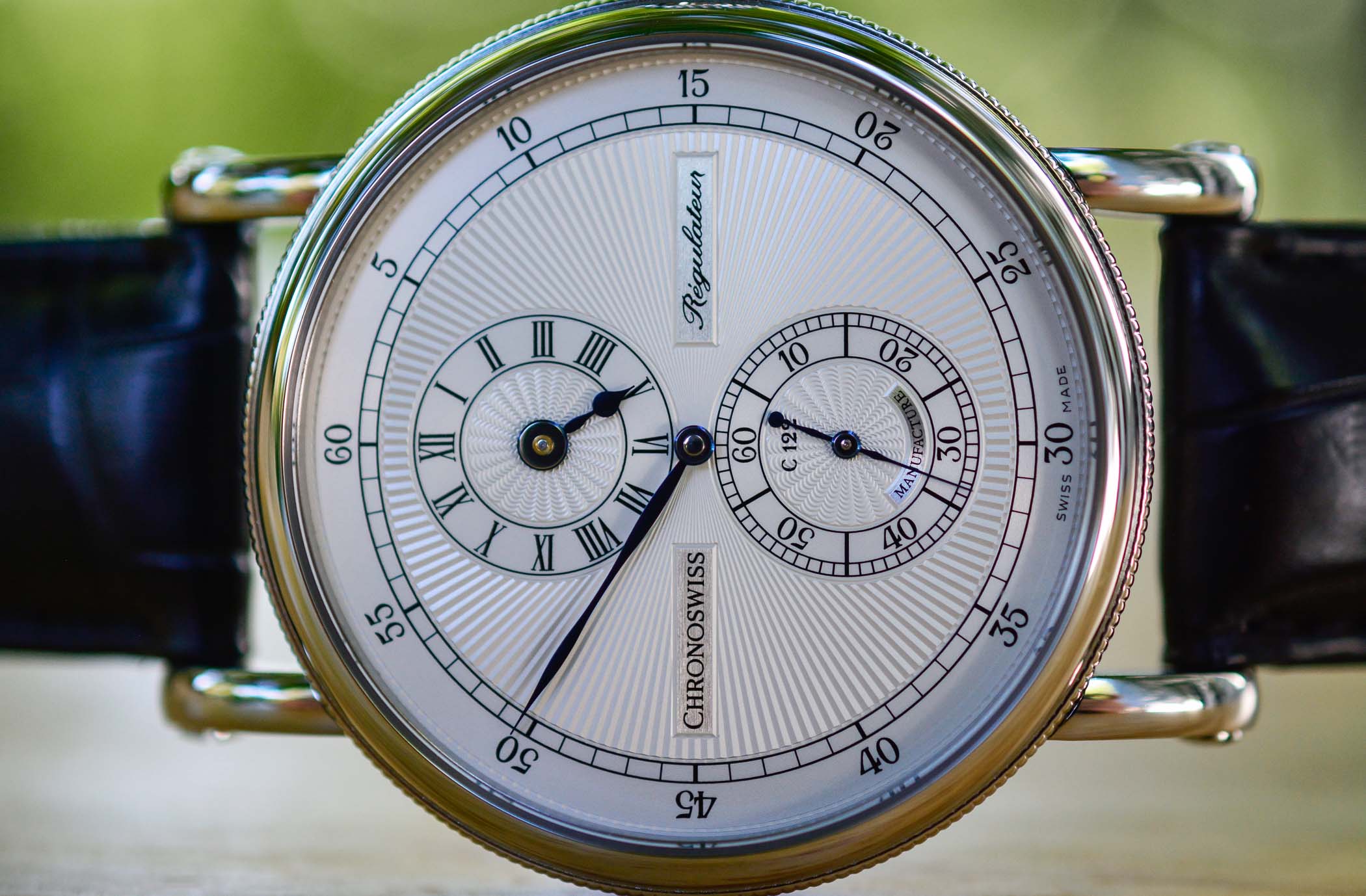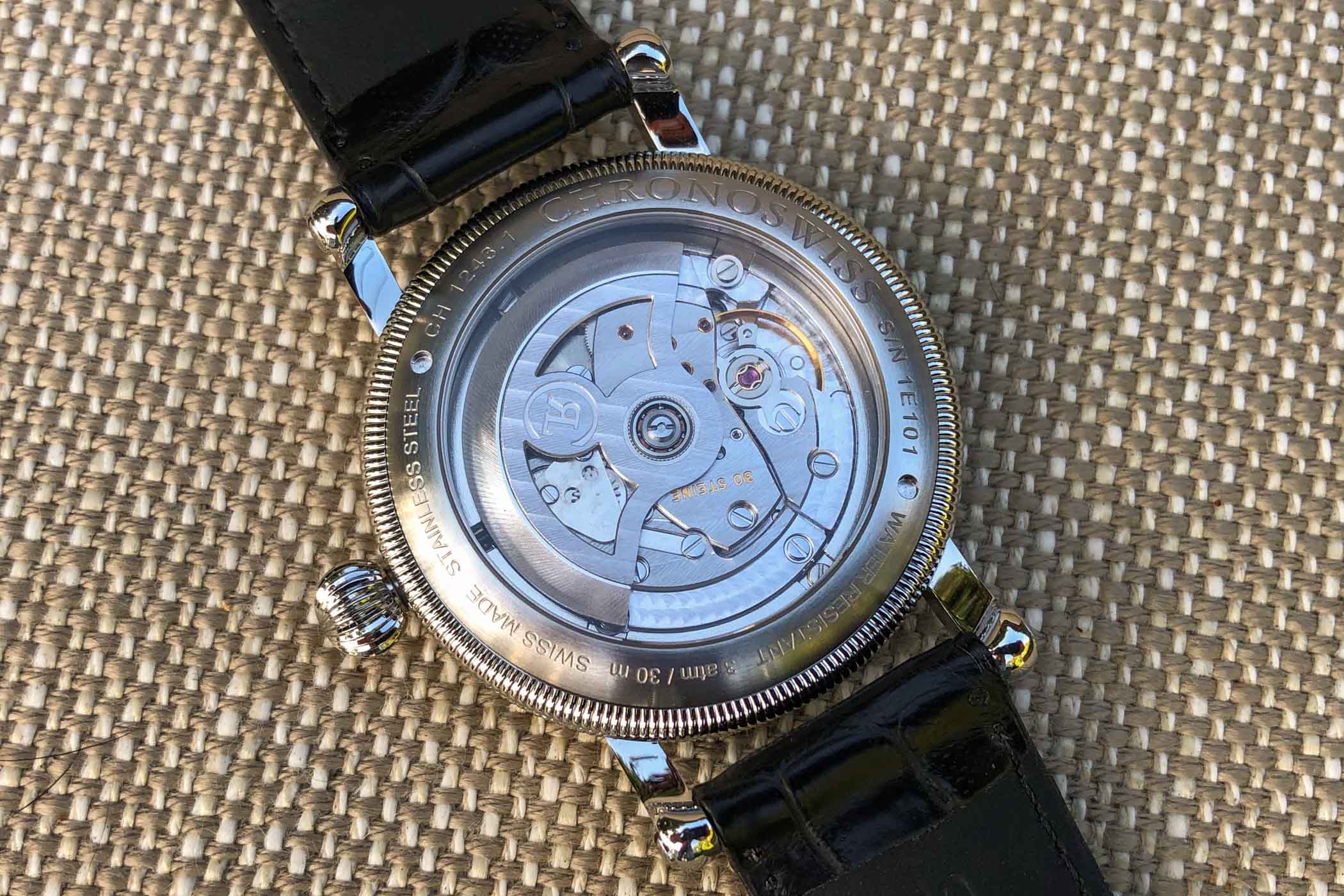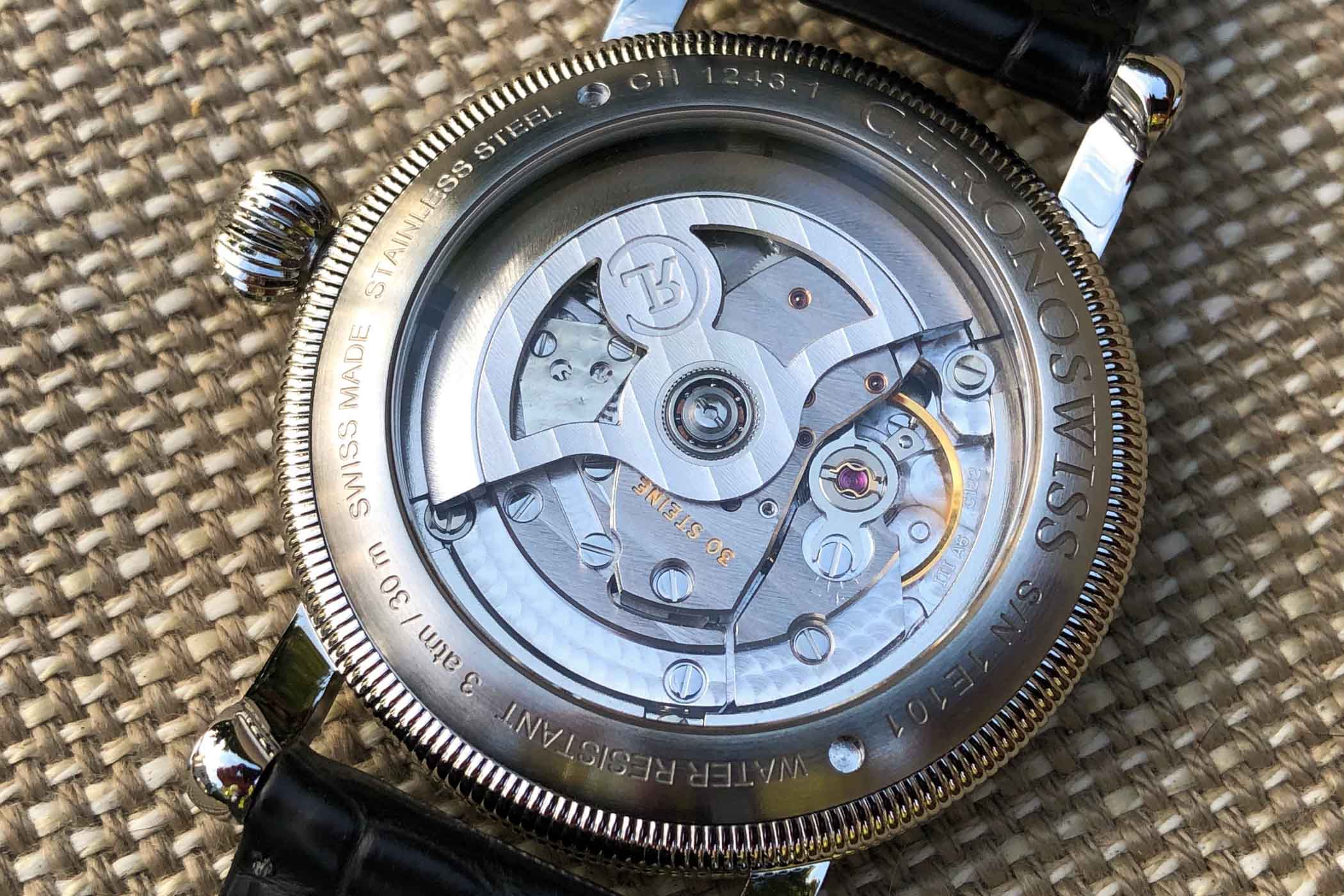The Classic Chronoswiss Regulator Manufacture
Classic successor to the inaugural regulator wristwatch with a guilloché dial and an original calibre.

If a regulator wristwatch comes up in conversation, odds are that Chronoswiss is a part of it. The brand was first to produce a regulator wristwatch in series with the Régulateur, a simple and elegant piece that led to the company’s signature style. Rare examples of regulator wristwatches existed prior to this, but none were serially produced. Chronoswiss has since evolved the original formula with complex, even futuristic regulators featuring jumping hours, retrograde minutes and seconds, “floating” elements in the Flying Regulator Open Gear series – a commitment to advancing the design, but like a classic German sports car, some things never go out of style. Today, we look at the opposite, the elegant simplicity of the Chronoswiss Regulator Manufacture.
This watch is, in many ways, the personification of what a regulator should be. Classic, straightforward and well-fitting, and something that wouldn’t have looked out of place a century ago. That doesn’t mean that newer, modern interpretations of the style are misguided. Far from it, in fact. But there will always be a place for a piece like this and it’s a testament to how well-designed the first Régulateur was. Let’s take a closer look at the timeless Regulator Manufacture.
Background
At 36 years old, Chronoswiss is among the newer generation of brands. Founded in 1983 by Gerd R. Lang in München, Germany, the brand started with an impressive portfolio including the first skeletonized chronograph (Opus), a tourbillon and quarter repeater. In 1987, it took the novel approach of producing the first regulator-style wristwatch in series.
A regulator separates the hands into individual registers with the minute hand usually central and prominent. This goes back hundreds of years when pocket watch ateliers used regulator master-clocks to set their timepieces, generally only needing the large minute hand for quick reference. Few brands are as closely associated with this particular style as Chronoswiss.

Early on, calibres were new-old-stock from Enicar and Marvin, but Swiss ETA movements are most commonly used today. The original Régulateur (following a brief stint with a hand-wound calibre) used a modified Enicar 165 automatic, renamed the Chronoswiss C. 122. The brand chose to stick with the C. 122 for the Regulator Manufacture, maintaining a direct lineage. In addition to the regulator style, the brand has several unique external features that make almost any Chronoswiss model recognizable at a glance. Examples include distinct knurled edges on both sides of the case (earlier models had knurled bezels), an oversized onion crown and large, sloping lugs.
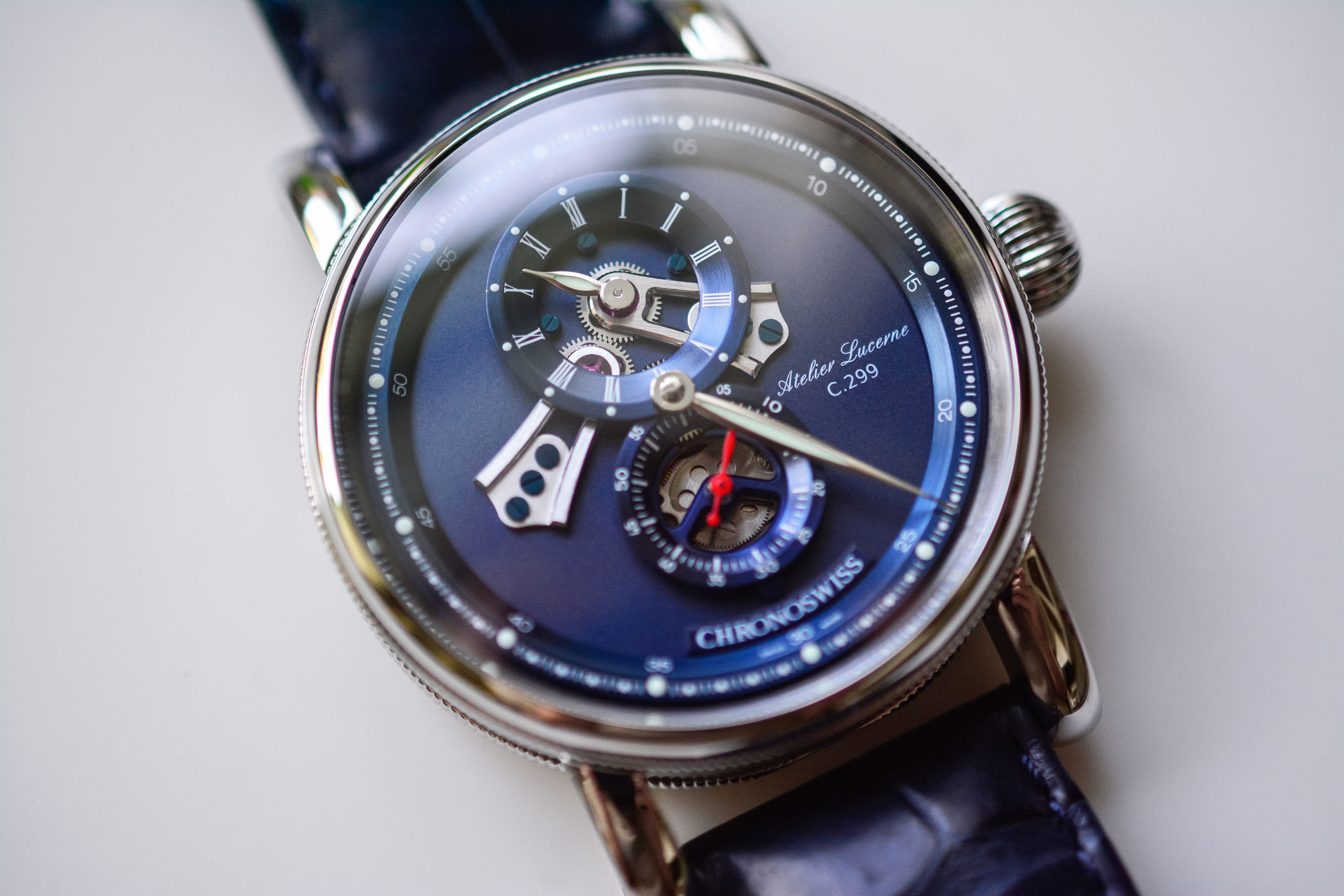
Chronoswiss became a Swiss brand in 2012 when Oliver Ebstein bought the company and moved its headquarters to Lucerne, Switzerland. He continued the success of Lang’s tenure by following the established direction of the company with low production, hand-finished lines and familiar design cues. The Flying Regulator Open Gear in 2018 reimagined the style with multi-dimensional dial elements and exposed bridges, gears and jewels. Evolutions of this base continued with models like the Flying Grand Regulator Skeleton Limited Edition and Flying Grand Regulator Open Gear ReSec. The “House of Chronoswiss” is a working museum within the headquarters that demonstrates advanced techniques like high-fire enamelling and engine turning (guilloché) for visitors. The brand’s Sirius and Timemaster collections feature more conventional three-hand and chronograph lines, but it’s the regulators that truly define the company.
Case and Design
The 316L stainless steel case is 40mm in diameter and 11mm in height, up a bit from the Régulateur’s dimensions of 38mm x 10.5mm. An optional 18k gold case is also available. The bezel and top and bottom of the lugs are polished, with a vertically brushed finish on the sides. The Régulateur had a knurled bezel and second knurled ring on the bottom edge, just above the caseback. The Manufacture has much thinner knurled rings spanning both edges of the case (and a polished bezel), but the overall aesthetic is virtually the same. The oversized onion crown, a signature element on almost all Chronoswiss watches, is a bit larger than the original’s and the long, sloping lugs with exposed screws are about the same.
A sapphire crystal with an anti-reflective coating protects the dial and there’s a sapphire exhibition caseback. The case is water-resistant to 30 metres. The watch wears a bit smaller than the diameter suggests, but the extending lugs almost compensate for that by presenting a larger presence on the wrist. It’s an interesting juxtaposition and one that I quite like.
DIal and hands
The dial is where the biggest divergence from the Régulateur is seen in the form of multiple guilloché patterns. The original dial had a simple, matte finish. The Manufacture’s sterling silver dial features a sunray pattern with wave patterns inside the two sub-dials, all engine-turned by hand. This gives the newer piece a more classic and sophisticated dynamic with an art form first developed by Breguet (for watch dials) in the 18th century. Everything else is almost identical to its older brother including the hands, which are thermally blued steel with a Poire Stuart style and the typography, which is unchanged since the original’s debut in 1987.
A minute track spans the outermost perimeter with Arabic numerals printed every five minutes just above a railroad track. The top hour sub-dial has Roman numerals with the bottom seconds sub-dial sporting Arabic numerals every ten seconds. There are three plaques on the dial relaying the model’s name with CHRONOSWISS at 9 o’clock, Régulateur in script at 3 o’clock and MANUFACTURE in an arch in the seconds sub-dial. The multiple sub-dials have an almost chronograph aesthetic, especially to the uninitiated, but in fact, it’s a simple, time-only piece with a classic regulator configuration in a vertical layout (with the minute hand large and centralized). A miniature master-clock on your wrist.
Movement
Many new Chronoswiss models feature Swiss ETA movements, but the Manufacture stays with the same calibre as the Régulateur. Based on the Enicar 165 automatic, the Chronoswiss C. 122 has 30 jewels, beats at 21,600vph (3Hz) with a 40-hour power reserve. An additional, in-house designed and produced module is used for the regulator setup. Enicar was founded in 1914 by Ariste Racine (the name is his last name reversed) and the brand produced its own movements by 1920. Production ceased around 1970 and these new-old-stock Enicar calibres provide a unique character and history that modern equivalents can’t quite match. Seen from the exhibition caseback, the movement is decorated with Côtes de Genève, perlage and a custom openworked rotor. It’s not overly embellished and has a bit of a workhorse vibe.
Strap
The 20mm black Louisiana alligator leather on the Manufacture is among the most comfortable I’ve ever worn straight out of the box. It’s lightly padded and features a stainless steel pin buckle with the brand’s logo in a circular plaque (a folding clasp is optional). I just can’t say enough about it. It’s aesthetically perfect for the case and dial (dressy, but not overly so) and feels as if I’ve already been wearing it for six months. Whatever sorcery the makers used in its production, I wish all straps had this bit of magic. It even fits my relatively small wrists without the need for extra holes, again a rarity out of the box (three strap sizes are offered, from small to large). Talk about a proverbial home run.
Conclusion
Regulators are one of my favourite styles with a unique character that represents a facet of watchmaking history. It turns a simple, time-only piece into a sophisticated display that’s always fun to look at. Other brands have produced intriguing examples since Chronoswiss first introduced regulators to the masses, but at the end of the day, no one does it better. The Regulator Manufacture is a direct descendant of the Régulateur and an almost identical twin, and the few changes that were made only improve the watch overall. The upgraded 40mm diameter really hits the sweet spot for a contemporary piece and the new guilloché patterns add a classical elegance that the original lacked. Chronoswiss was careful not to significantly alter the aesthetic and remained true to its roots, and it’s important for a watch like this to exist within its extensive regulator portfolio. In many ways, it serves as an ambassador for both the brand and seems destined to continue as such for many years to come.
The Regulator Manufacture retails for CHF 6,100 in stainless steel and CHF 14,550 in 18k gold. These prices aren’t cheap, but more than reasonable when considering the low production, history and extensive handwork involved. Chronoswiss only produces around 7,000 watches per year so there’s a bit of exclusivity in ownership as well. For more information or to make a purchase, visit the Chronoswiss website.

